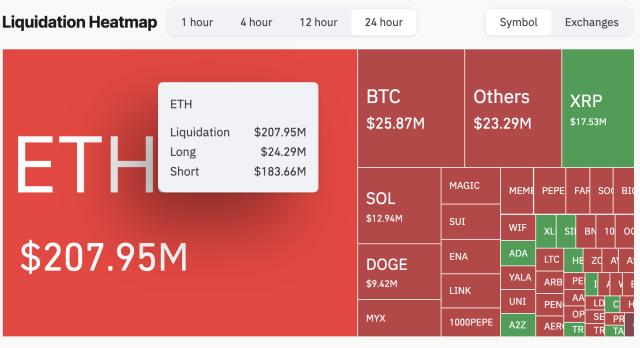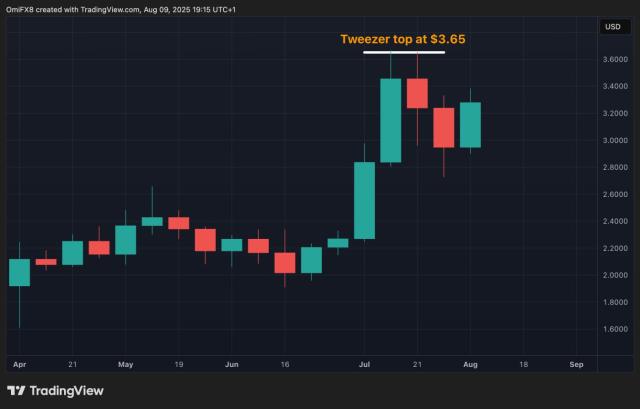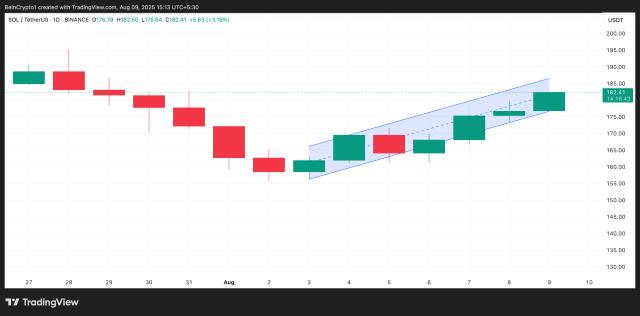Ten years ago, it ignited the imagination of decentralization with a white paper. Ten years later, it is still the core of the crypto world, but it is no longer the only stage.
By ChandlerZ, Foresight News
Cover: Photo by Steve Johnson on Unsplash
Over the past century, humans have redefined the form of computers several times.
From the huge computers created for rocket navigation in the middle of the last century, to IBM pushing mainframes into enterprises, to Microsoft and Apple bringing personal computers into thousands of homes, and then smartphones putting computers in everyone's pocket.
Every leap in computing power reshapes the way people connect with the world.
In 2013, when 19-year-old Vitalik Buterin was playing World of Warcraft, Blizzard arbitrarily weakened the warlock's skills. This made him seriously think about a question for the first time: In the digital world, who can ensure that the rules are not arbitrarily rewritten?
If there is a "world computer" that does not belong to any company, is not controlled by a single power, and can be used by anyone, can it become the starting point for the next form of computing?
On July 30, 2015, in a small office in Berlin, dozens of young developers stared at the block counter. When the number jumped to 1028201, the Ethereum mainnet automatically started.
Vitalik recalled: “We were all sitting there waiting, and then it finally hit that number, and about half a minute later it started generating blocks.”
At that moment, the spark of the world's computer was ignited.
Starting point and spark
Ethereum, which had fewer than 100 developers at the time, was the first to embed smart contracts into a blockchain, providing a Turing-complete platform that transformed the blockchain from a mere accounting tool into a world-class public computer capable of running programs.
Soon, this new world computer underwent severe tests.
In June 2016, a major security incident occurred within the Ethereum-based decentralized autonomous organization, The DAO. Hackers exploited a smart contract vulnerability and stole approximately $50 to $60 million in Ether. The community engaged in a heated debate over whether to "roll back history," ultimately opting for a hard fork to recover the assets. This split also resulted in the creation of a separate chain, Ethereum Classic.
This incident brought the issue of global computer governance to the forefront for the first time: should we insist on immutability, or should we correct errors to protect users?
The ICO boom of 2017 and 2018 propelled Ethereum to a peak. Countless projects issued tokens through Ethereum, raising billions of dollars and driving its price skyrocketing. However, the subsequent burst of the bubble sent Ethereum into a trough, with the price falling by over 90% from its peak at the end of 2018. The network was plagued by congestion and high transaction fees. During that period, the popularity of CryptoKitties even caused congestion on the mainnet to the point of near-halt, exposing the limitations of the world's computer's insufficient computing power for the first time.
To address performance bottlenecks, the Ethereum community began researching on-chain sharding solutions as early as 2015, attempting to increase throughput by distributing the verification load among nodes. However, sharding technology is complex to implement and progress has been slow. Simultaneously, developers also explored off-chain scaling approaches, from early state channels and Plasma to the Rollup solution that emerged in 2019. Rollup significantly improves processing power by bundling large numbers of transactions for verification on the main chain, but this requires sufficient data availability from the mainnet. Fortunately, around 2019, Ethereum achieved a breakthrough in data availability, solving the problem of large-scale data verification.
Since then, Ethereum has gradually formed an expansion route of "mainnet security and second-layer execution", and the world computer has begun to be disassembled into a multi-layer collaborative system.
In the following years, DeFi exploded on Ethereum, with decentralized lending, trading, and derivatives mushrooming. The NFT craze propelled digital art into the mainstream, with Beeple's work fetching $69 million at Christie's. While the network's boom was accompanied by persistently high transaction fees, Ethereum began responding through protocol improvements. In August 2021, the EIP-1559 upgrade implemented a base fee burn mechanism, destroying the base fee of each transaction in ETH, thereby reducing inflationary pressure during periods of high demand. This reform led to a brief period of net deflation for ETH during the 2021-2022 bull market, driving its price to an all-time high near $4,900.
On September 15, 2022, The Merge was completed. The core energy of the world computer was switched from the power-consuming PoW to PoS, energy consumption was reduced by 99%, and the new issuance rate was reduced by 90%. ETH holders began to participate in the network through staking, and the energy system of this world computer was completely replaced.

Data from one year after the merger showed that the net supply of Ethereum had decreased by approximately 300,000 ETH, which is in stark contrast to the amount that should have been issued under the PoW mechanism. This deflationary characteristic has reinforced the market's expectations of ETH scarcity.
After these changes, by the end of 2023, Ethereum's mainnet performance and economics had improved, but new challenges had also emerged. To reduce costs and encourage the development of Rollups, Ethereum implemented the "Dencun" upgrade (Deneb + Cancun) in March 2024, introducing EIP-4844, also known as Proto-Danksharding. This improvement added special "data blob" transactions for Rollups to submit batches of transaction data. Because blob data is only stored briefly, the cost is much lower than regular data calls, significantly reducing the cost of submitting data from the second-layer network to the mainnet. The successful launch of Dencun marks a significant reduction in Rollup costs and brings the world computer one step closer to its goal of sharding.
Ten years have passed, and this world computer has evolved from an ideal in a white paper into an irreplaceable infrastructure in reality.
However, behind the brightly lit nodes, new difficulties quietly emerged...
The fog of middle age
As we enter 2024-2025, the difficulties faced by Ethereum will become increasingly apparent.
Layer2 has a significant diversion effect
While Ethereum's recent embrace of the Rollup-centric approach has alleviated pressure on the main chain, it has also resulted in a significant amount of transactions and value remaining on the second-layer network, preventing it from returning to the mainnet. In a report published in early 2025, Standard Chartered Bank bluntly stated that the rise of second-layer networks has eroded the value captured by the Ethereum mainchain. The report estimated that Coinbase's launch of Base, a leading Ethereum second-layer, alone has "taken away" approximately $50 billion in the Ethereum ecosystem's market capitalization.

Transactions and applications that might have previously been conducted on the mainnet have shifted to the lower-cost Layer 2, resulting in a decrease in mainnet transaction fee revenue and on-chain activity. This trend has become even more pronounced following the Dencun upgrade. EIP-4844 significantly reduces the cost of submitting data to the mainnet for Rollups, further increasing the appeal of Layer 2 for transaction sharing. In recent years, the daily transaction counts of Rollups like Arbitrum and Optimism have often matched or even exceeded those of the mainchain, confirming the notion that Ethereum is outsourcing transaction execution.
In other words, the parts of the world's computer run efficiently on the outside, but the mainframe's ability to capture value is eroded.
Competition from external public chains is becoming increasingly fierce
Due to Ethereum's early performance and fee shortcomings, many competitors have tried to provide faster and cheaper alternatives.
For example, Solana, with its high throughput, has attracted a large number of developers. Most emerging projects and MEME projects in this bull market are primarily based on Solana. In the stablecoin sector, Tron, with its near-zero transaction fee, has facilitated the massive issuance and transfer of major stablecoins like USDT. The circulating USDT on the Tron chain now exceeds 80 billion, surpassing Ethereum to become the largest stablecoin network in terms of scale, and its transaction volume is also far higher than Ethereum's. This means that Ethereum has ceded its dominant position in the key stablecoin sector.
Furthermore, public chains like BNB Smart Chain have also diverted some of the traffic from GameFi and Altcoin trading. While Ethereum remains the largest DeFi ecosystem in terms of both number of protocols and TVL, accounting for approximately 56% of all DeFi activity as of July 2025, it's undeniable that Ethereum's relative dominance has declined compared to its peak amidst the multi-chain landscape.

Governance and security concerns
Following the transition to PoS, the issue of staking centralization has sparked community concerns. Validation on the Ethereum network requires a minimum stake of 32 ETH, prompting retail investors to participate through staking pools or exchanges, leading to a situation dominated by a small number of large staking service providers. The largest decentralized staking pool, Lido, once held over 32% of the network's staking market share. With the entry of more competitors, Lido's share has fallen slightly to approximately 25%, but it remains significantly ahead of the next largest entities, such as Binance (approximately 8.3%) and Coinbase (approximately 6.9%). The community is generally concerned that if any single entity holds more than one-third of the validation weight, it could compromise blockchain consensus and even network security.

Vitalik has previously called for limiting the share of a single validator entity through transaction fees, for example, to below 15%. However, in the 2022 Lido governance vote, the proposal to set a self-limiting cap was rejected by over 99% of the votes. Currently, according to Dune data, the Ethereum network has over 1.12 million validators and a total of over 36.11 million ETH staked, representing 29.17% of the total ETH supply. How to promote diversity in staking without sacrificing network security remains an unresolved issue.
The Foundation's role is controversial
For years, the Foundation has been accused of a lack of transparency in its ecosystem funding and fund management. The community has frequently questioned its selling of ETH holdings at peak prices and its lack of public explanation. Some early developers believe that the Foundation's hands-off approach has led to the accumulation of ecosystem fragmentation and narrative confusion, making it difficult for the governance system to effectively guide the process.
Meanwhile, the voices of opinion leaders gradually faded. Vitalik and several early developers still wielded considerable influence, but they rarely made clear statements on key directions. They opted for restraint, avoiding influencing market sentiment and refraining from intervening in governance disputes. In the long run, this restraint created another vacuum: a lack of community consensus, a lack of willingness to take decision-making responsibility, and many proposals lacked drivers. Open discussions declined, with technical roadmaps and ecosystem strategies increasingly relegated to closed-door discussions.
Without a clear helmsman, the world computer is running, but it lacks a sense of direction.
Gaps in the application layer and unsatisfactory market performance
If Ethereum hopes to become a world computer on the chain, its value should not only be to provide computing power and security, but also to be able to carry a steady stream of new applications and new experiences, allowing developers and users to see the boundaries of imagination being constantly broken.
But after a decade, the only truly market-proven and scaled-up applications are still DeFi and NFT. Since then, the application layer has become quiet.
Social, gaming, identity, DAO and other areas that were once highly anticipated have yet to produce phenomenal products comparable to DeFi and NFT.
Web3 social networks such as Friend.tech and Lens were once very popular, but their popularity quickly faded and their retention rate was extremely low; on-chain games were once a hot topic, but most of them remained at the level of simple token economic experiments and struggled to enter the mainstream; decentralized identity and DAO governance are still more at the stage of technical exploration and small-scale experiments.
On-chain data confirms this lack. In July 2025, the number of ETH destroyed on the Ethereum network per day was less than 50, setting a new historical low. This is almost incomparable to the daily destruction of nearly 1,000 ETH during the frenzy of 2021.

During the same period, the average number of active addresses in 7 days dropped to about 566,000, and did not even reach the high point since March 2024; the number of new addresses added daily was about 120,000, and the monthly number of on-chain transactions was about 35 to 40 million.

For a network that bills itself as the world's computer, this means it's missing the spark that could ignite a new wave of large-scale applications.
Ethereum boasts the largest developer community in the industry and a wealth of technical expertise, but it still hasn't found the killer app that could attract tens of millions of new users and transform their usage habits. Ten years later, this machine remains powerful, yet it's still searching for its next mission.
This stagnation at the application layer is also reflected in market performance. ETH approached its all-time high of $4,900 in November 2021 but has not broken through in the years since. Technological factors such as mergers and fee reforms have provided limited support, and its price performance from 2022 to 2024 continues to lag behind Bitcoin, Solana, and even BNB. Entering 2025, while other crypto assets are constantly breaking records, ETH's price remains hovering just over $3,000. In April, the ETH/BTC ratio even dipped below 0.02, hitting a multi-year low. Once considered the fuel of the smart contract world, ETH's wealth effect in the market is waning.
Recently, strategic allocations by listed companies and institutions have provided some support for ETH. Companies like Sharplink Gaming and BitMine have publicly disclosed their treasury strategies, issuing convertible bonds, preferred shares, and market-priced offerings to increase their ETH holdings. Unlike Bitcoin, ETH can generate protocol-level returns through staking and re-staking, making it an interest-bearing digital asset in corporate treasuries. This inherent yield-generating property makes it attractive. Within weeks, ETH prices rebounded from their lows to above $3,600.
However, some analysts pointed out that this round of recovery is more due to active allocation of funds. The on-chain ecology itself has not seen a significant leap. The price rebound is not accompanied by developer innovation and user influx, but more like a stopgap option when market funds are looking for targets.
Technological advances and the entry of institutions cannot replace applications that can truly change user habits and release new demands.
Ten years later, Ethereum still needs to answer that original question: As the world's computer, what kind of programs should it run to ignite the world's imagination again?
The unfinished road, the direction of the next decade
Facing the mid-life test of internal and external difficulties, whether Ethereum can get out of the trough depends on whether its technology and ecology can open up new growth space.
Technology: Making the world's computers faster and more unified
The community has drawn up a blueprint for upgrades in the post-merger era.
In his article "The Possible Future of Ethereum: The Surge," Vitalik explained that the core goal for the next phase is to increase the combined throughput of the mainnet and layer-2 networks to 100,000 transactions per second while maintaining the decentralization and robustness of Layer 1. This will also ensure that at least some Layer 2 networks fully inherit Ethereum's core characteristics (trustlessness, openness, and censorship resistance). Furthermore, the entire network will experience more like a unified ecosystem, rather than 34 fragmented blockchains. This means that cross-L1/L2 transfers, fund flows, and application switching will become as simple as operations within a single chain.
EIP-4844 in 2024 is just the starting point, and data sampling and compression technologies will be introduced later.
With the maturity of zero-knowledge proof technologies such as ZK-SNARK and ZK-STARK, performance bottlenecks are expected to be broken through, and users who have previously overflowed to other public chains and L2 may return.
Governance and Economy: How Mainchains Can Regain Value
Not only performance, Ethereum is also thinking about how to allow the core of the world's computer to continue to capture value.
In July 2025, the Ethereum Foundation launched a new structural reform, dubbed "The Future of Ecosystem Development," attempting to step out from behind the scenes and become the helmsman guiding the ecosystem's development. The Foundation outlined two long-term goals: to maximize the number of people who directly or indirectly use Ethereum and benefit from its underlying values, and to enhance the resilience of its technical and social infrastructure.
To this end, the Foundation reorganized into four pillars centered around "acceleration, amplification, support, and long-term communication," reorganized the internal team, established modules such as corporate relations, developer growth, application support, and founder support, and strengthened the team's content and narrative to enhance community cohesion.
The foundation also pledged to increase transparency, emphasize more targeted funding for public goods, launch a Launchpad to support governance and sustainable operations, while reducing operating expenditures and establishing a funding buffer of approximately 2.5 years.
The outside world generally views this series of actions as a substantive adjustment by the foundation in response to criticism of its inaction, and also as a boost for the foundation in the next decade.
New ideas have emerged during community discussions: Is it possible to extract a portion of the benefits from the Layer 2 boom? Or could the protocol fee and MEV distribution mechanisms be optimized to allow the main chain to share in the growth dividends of the Rollup era? These options are still under exploration, but they reflect a common concern: without proactive adjustments, the main chain may degenerate into a mere liquidation layer, its value and vitality continuously diluted.
Standing at the crossroads looking for new sparks
Technology and funds are not sufficient.
Every past Ethereum boom was fueled by new applications and narratives. But now, the entire blockchain industry is in a period of innovation stagnation, lacking phenomenal breakthroughs.
Perhaps blockchain itself needs to undergo a self-revolution, fostering new narratives and applications in areas like social interaction, identity, and AI. Some also believe the next round of breakthroughs may come from external ecosystem impacts.
Vitalik further reminded in his speech "The Next Decade of Ethereum" that Ethereum developers should not just copy Web2, but should focus on future forms of interaction, including wearable devices, AR, brain-computer interfaces and local AI, and incorporate these new entrances into the design vision of Web3.
Looking back over the past decade, Ethereum still boasts the industry's largest developer community, the richest applications, and deep technical expertise. However, it is currently facing a period of bottlenecks, competition, and renewed interest.
As Vitalik said: "The past ten years of Ethereum have been a decade of our focus on theory. In the next ten years, we must change our focus and think about what impact we will have on the world." In his view, the next generation of applications must not only have different functions, but also retain shared values. At the same time, these applications must be useful enough to attract those who have not yet entered the crypto field.
The world's computer is experiencing a decade of itch. It hasn't stopped running, it's just looking for new directions.
The next decade belongs to it and to everyone who still believes in this dream.
But as Vitalik said, “Everyone who speaks out in the Ethereum community has the opportunity to participate in the process of building the future together.”
Disclaimer: As a blockchain information platform, the articles published on this site solely reflect the personal views of the authors and guests and do not represent the position of Web3Caff. The information within these articles is for reference only and does not constitute any investment advice or offer. Please comply with the relevant laws and regulations of your country or region.
Welcome to join the Web3Caff official community : X (Twitter) account | Web3Caff Research X (Twitter) account | WeChat reader group | WeChat public account







